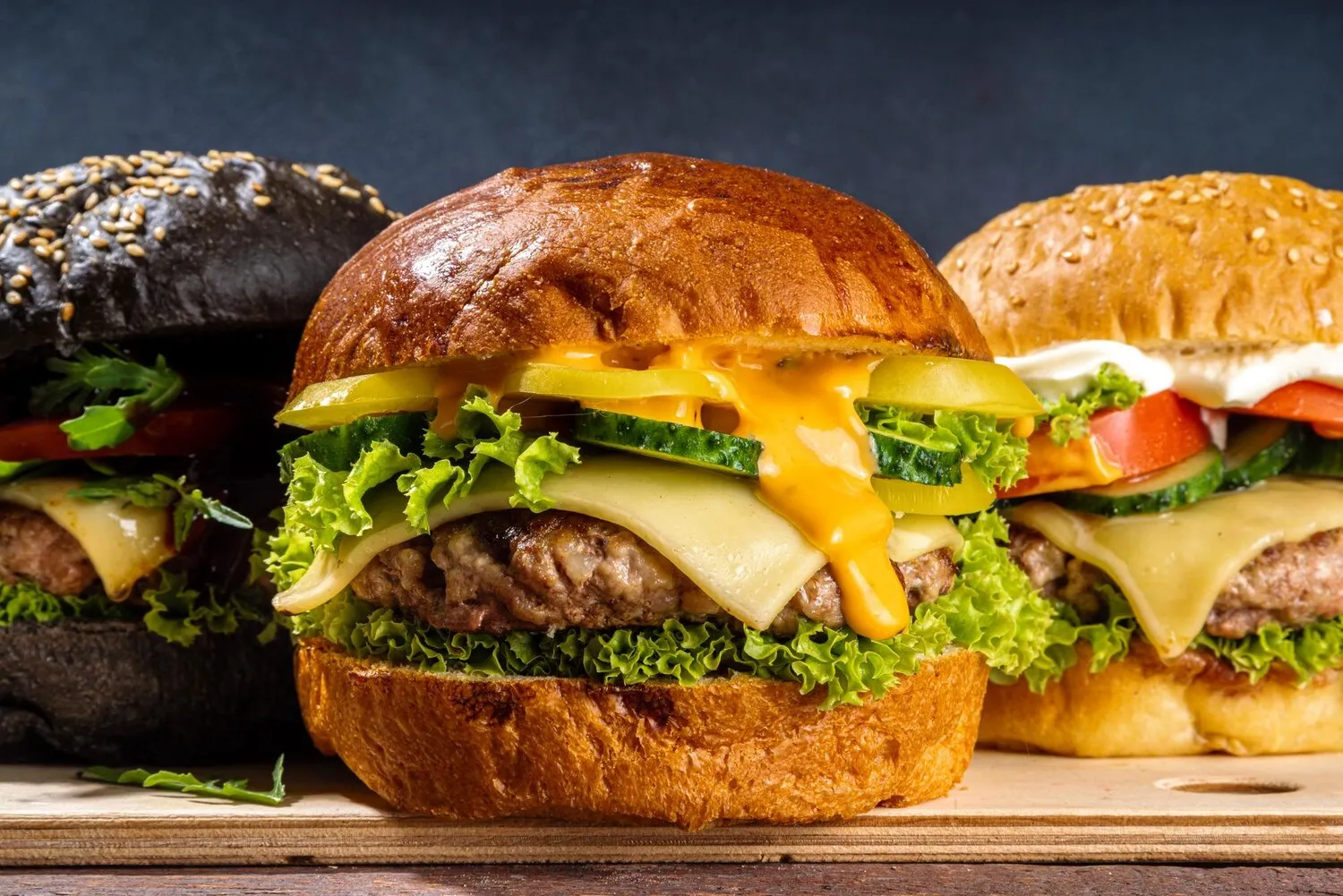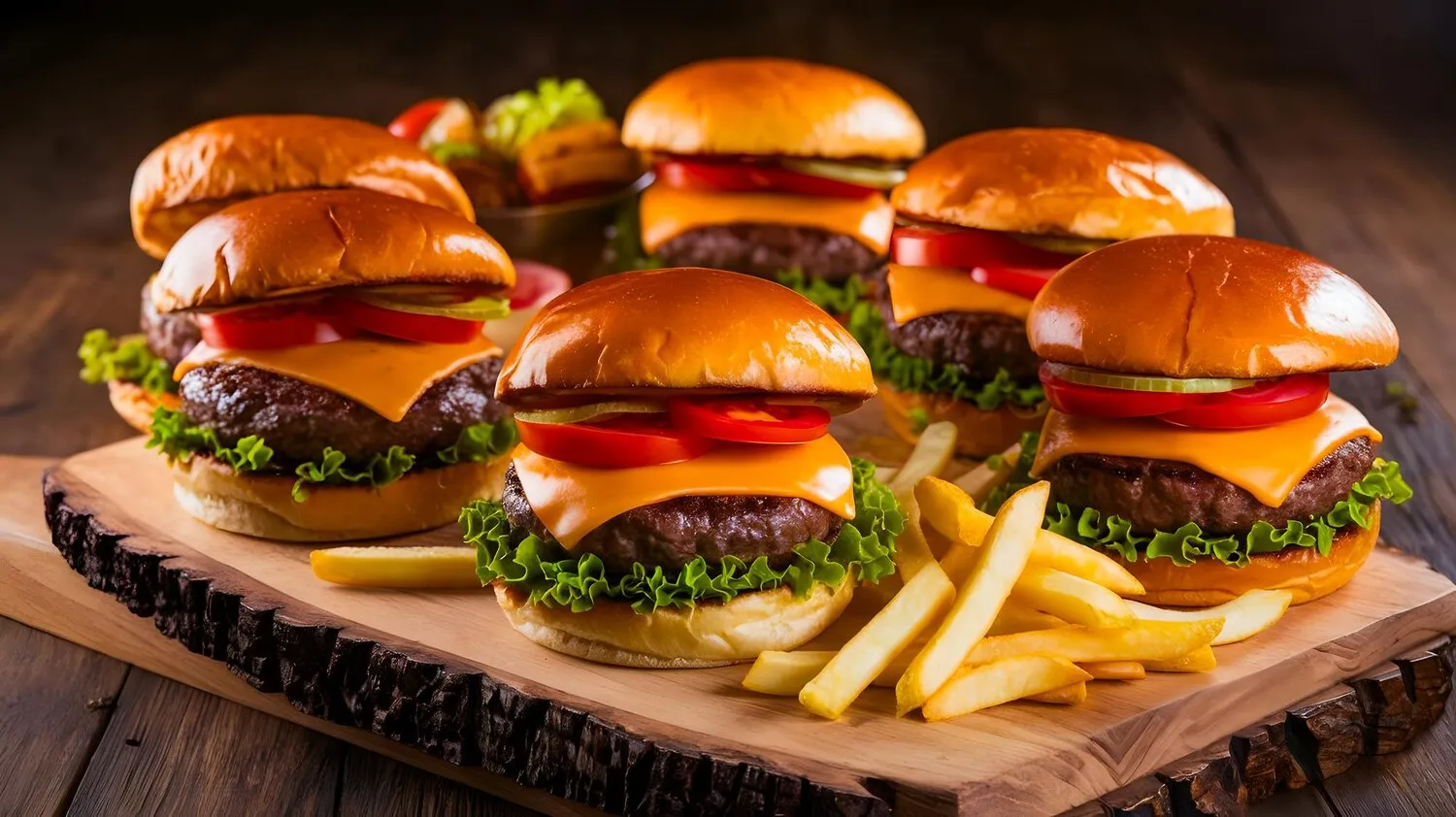
Burgers
Variety of burgers
Nutrition Facts
* The % Daily Value (DV) tells you how much a nutrient in a serving of food contributes to a daily diet. 2,000 calories a day is used for general nutrition advice.
The hamburger's origins are debated, but it emerged in the late 19th and early 20th centuries in the United States. Ideas range from German Hamburg steaks served to immigrants to cooks creating a sandwichable version of the steak. White Castle, founded in 1921, is often credited with popularizing the burger on a national scale, making it accessible and safe to the public.
Burgers are deeply ingrained in American culture, representing fast food, casual dining, and backyard barbecues. They are a symbol of American cuisine and are widely enjoyed across all demographics.
American Icon
The hamburger is often considered a quintessential American food, representing convenience, affordability, and the melting pot of culinary influences.
Fast Food Staple
Burgers are a cornerstone of the fast-food industry, with countless chains specializing in different burger variations.
Backyard Barbecues
Burgers are a popular choice for grilling at home, often served at barbecues and gatherings.
Regional Variations
Different regions have their own unique burger styles, such as the Oklahoma onion burger, the Juicy Lucy from Minneapolis, and the green chile cheeseburger from New Mexico.
Burgers offer a wide range of flavors depending on the ingredients used. The core flavor profile revolves around savory and umami, with variations depending on the toppings and condiments.
The primary flavor comes from the beef patty, which offers a rich, meaty taste. Salt and pepper enhance this flavor. Cheese adds creaminess and saltiness, while toppings like lettuce, tomato, and onion contribute freshness and crunch. Condiments like ketchup provide sweetness and tanginess, mustard adds a sharp bite, and mayonnaise offers richness. Pickles offer a sour and acidic element. Smoky notes can be introduced via bacon or grilled onions. Spicy burgers incorporate ingredients like jalapenos or chili flakes. Sweetness can be achieved by caramelized onions or sweet relish. The overall flavor profile is typically a balance of savory, salty, sweet, acidic, and sometimes spicy notes.
Meat Selection
Use a good quality ground beef blend with a fat content of around 80/20 for optimal flavor and moisture. Higher fat content prevents the burger from drying out during cooking.
Patty Shaping
Gently form the patties, avoiding overworking the meat. Create a slight indentation in the center of each patty to prevent it from bulging during cooking.
Seasoning
Season generously with salt and pepper just before cooking. Avoid seasoning too early, as it can draw out moisture.
Cooking Method
Cook over medium-high heat for a good sear. Use a cast iron skillet or grill for best results. Don't press down on the patties during cooking, as this will squeeze out the juices.
Doneness
Use a meat thermometer to ensure the burger is cooked to the desired doneness. For medium-rare, aim for 130-135°F; for medium, 140-145°F; and for well-done, 160°F or higher.
Resting
Let the burgers rest for a few minutes after cooking before serving. This allows the juices to redistribute, resulting in a more flavorful and juicy burger.
Bun Selection
Choose a sturdy bun that can hold the burger and toppings without falling apart. Toasting the bun adds flavor and prevents it from getting soggy.
Topping Combinations
Experiment with different toppings to create unique flavor combinations. Consider classics like lettuce, tomato, onion, and pickles, or try something more adventurous like avocado, bacon, or caramelized onions.
Explore additional Fast Food dishes and restaurants
Explore Fast FoodDiscover top dining spots and culinary experiences in São Carlos.
Explore São CarlosLearn more about the food culture, restaurant scene, and culinary heritage of Brazil.
Explore Brazil
